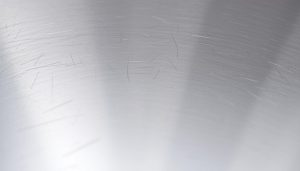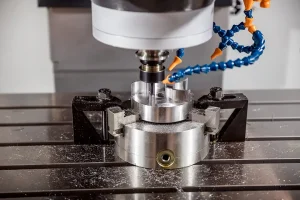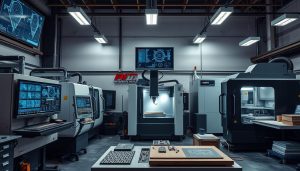In today’s fast-paced world, manufacturers are constantly seeking ways to streamline their production processes and stay ahead of the competition. One innovative approach that has gained significant traction is rapid tooling. This revolutionary technique offers a powerful solution for accelerating manufacturing, enabling businesses to bring their products to market more efficiently and cost-effectively.
Rapid tooling is a game-changing approach that transforms the traditional tooling methods, allowing manufacturers to create high-quality tools and prototypes in a fraction of the time and at a lower cost. By leveraging advanced technologies, such as additive manufacturing and computer-aided design (CAD), rapid tooling empowers businesses to respond quickly to changing market demands and stay ahead of the curve.
In the following sections, we will delve deeper into the world of rapid tooling, exploring its key concepts, methods, advantages, and applications. By understanding the power of this cutting-edge approach, businesses can unlock new opportunities for growth and success in the ever-evolving manufacturing landscape.
What is Rapid Tooling?
Rapid tooling, a crucial aspect of modern manufacturing, is a process that enables the accelerated creation of tooling, molds, and other production aids. By leveraging advanced technologies, rapid tooling offers a dynamic and efficient alternative to traditional tooling methods. At its core, rapid tooling aims to streamline the product development cycle, allowing businesses to bring their ideas to life faster and more cost-effectively.
Definition and Key Concepts of Rapid Tooling
Rapid tooling is defined as the use of additive manufacturing, also known as 3D printing, or subtractive manufacturing techniques to produce functional tools, molds, and prototypes in a shorter timeframe compared to conventional methods. This approach allows for the rapid creation of customized, high-quality tools that can be used for small to medium production runs or even for the final manufacture of end-use products.
Different Methods of Rapid Tooling
- Additive Manufacturing: This method involves building up layers of material, such as plastic or metal, to create the desired tool or mold. 3D printing is a popular additive manufacturing technique used in rapid tooling.
- Subtractive Manufacturing: In this approach, material is removed from a solid block or workpiece using tools like CNC machines to create the desired shape and form of the tool or mold.
- Hybrid Techniques: Some rapid tooling methods combine both additive and subtractive manufacturing, leveraging the strengths of each to create more complex and precise tools and molds.
The choice of rapid tooling method often depends on the specific requirements of the project, such as the desired material, the level of complexity, and the production volume.
Advantages of Rapid Tooling
In the world of manufacturing, rapid tooling has emerged as a game-changer, offering a multitude of advantages that streamline the production process. From accelerating prototyping to ensuring cost-effective small-scale runs, this innovative approach to tooling has transformed the way businesses approach design flexibility and material selection.
Speed in Prototyping and Production
One of the primary advantages of rapid tooling is its ability to expedite the prototyping and production stages. By leveraging advanced technologies such as rapid prototyping, manufacturers can quickly create and iterate on design concepts, reducing the time-to-market for new products. This speed also translates to the production phase, where rapid tooling methods can streamline the manufacturing process, enabling businesses to respond swiftly to market demands.
Cost-Effectiveness for Small Production Runs
Traditionally, tooling for small production runs could be prohibitively expensive, making it challenging for businesses to explore new product ideas or cater to niche markets. However, rapid tooling offers a more cost-effective solution, allowing for efficient and economical small-scale manufacturing. This flexibility empowers companies to experiment with new designs, materials, and production methods without incurring significant upfront costs.
Flexibility in Design and Material Choice
The true power of rapid tooling lies in its ability to provide unparalleled design flexibility. By leveraging advanced technologies, manufacturers can easily incorporate design changes, experiment with different materials, and adapt to evolving customer preferences. This flexibility translates to improved product quality, enhanced functionality, and the ability to meet the diverse needs of the market.
| Advantage | Description |
|---|---|
| Speed in Prototyping and Production | Rapid tooling accelerates the prototyping and manufacturing processes, enabling businesses to respond swiftly to market demands. |
| Cost-Effectiveness for Small Production Runs | Rapid tooling provides a more economical solution for small-scale manufacturing, allowing companies to explore new product ideas and cater to niche markets. |
| Flexibility in Design and Material Choice | Rapid tooling offers unparalleled flexibility, enabling manufacturers to easily incorporate design changes and experiment with different materials. |

“Rapid tooling has revolutionized the way we approach product development and manufacturing. It’s a game-changer that has unlocked new possibilities for businesses of all sizes.”
Techniques Used in Rapid Tooling
In the realm of rapid tooling, innovative techniques are revolutionizing the way prototypes and production tools are manufactured. From the versatility of 3D printing tooling to the efficiency of injection molding, these methods are driving the industry forward.
Additive Manufacturing and 3D Printing for Tooling
Additive manufacturing, or 3D printing, has emerged as a game-changer in rapid tooling. By utilizing advanced technologies like selective laser sintering (SLS) and fused deposition modeling (FDM), 3D printing allows for the creation of intricate, customized tooling components with remarkable speed and precision. This approach offers unparalleled design flexibility, enabling manufacturers to rapidly produce complex molds, dies, and fixtures that were once challenging to fabricate using traditional methods.
Injection Molding and Die Casting in Rapid Tooling
Injection molding and die casting remain essential techniques in the world of rapid tooling. These processes leverage precision-engineered molds and dies to efficiently produce high-quality parts in a fraction of the time required by conventional methods. By integrating these techniques with rapid tooling, manufacturers can dramatically reduce the lead time and cost associated with small to medium-sized production runs, making them an attractive option for a wide range of industries.
Hybrid Approaches and Their Benefits
In recent years, the concept of hybrid manufacturing has gained significant traction in the rapid tooling industry. By combining multiple techniques, such as additive manufacturing and traditional subtractive processes, manufacturers can leverage the strengths of each method to create truly innovative and efficient tooling solutions. This hybrid approach allows for the seamless integration of complex geometries, enhanced material properties, and accelerated production timelines, ultimately delivering a more comprehensive and versatile rapid tooling framework.
“The key to successful rapid tooling lies in the strategic integration of cutting-edge technologies, each with its own unique advantages.”
Applications of Rapid Tooling
Rapid tooling has emerged as a game-changer in various industries, transforming the way products are designed, prototyped, and manufactured. From innovative product prototyping to efficient small to medium-volume production, this technology is revolutionizing the way businesses approach their manufacturing processes.
Prototyping for New Product Designs
One of the key applications of rapid tooling is in the realm of product prototyping. By leveraging techniques such as additive manufacturing and 3D printing, companies can quickly and cost-effectively create high-quality prototypes of their new product designs. This accelerates the design validation process, allowing businesses to gather feedback, test functionality, and make necessary adjustments before committing to full-scale production.
Small to Medium Volume Production
Rapid tooling also shines in small to medium-volume production scenarios. Its cost-effectiveness and flexibility make it an attractive option for businesses that require shorter production runs or need to respond to changing market demands. This approach enables companies to remain agile and adaptable, quickly bringing new products to market without the need for expensive and time-consuming traditional tooling methods.
Aerospace, Automotive, and Medical Industries
Rapid tooling has found particular success in the aerospace, automotive, and medical industries. In the aerospace sector, it enables the production of complex components and prototypes for aircraft and spacecraft, while in the automotive industry, it streamlines the development of custom parts and tooling. The medical field has also embraced rapid tooling, leveraging it for the creation of patient-specific implants and medical devices.
| Industry | Rapid Tooling Applications |
|---|---|
| Aerospace | Complex component production, prototyping for aircraft and spacecraft |
| Automotive | Custom parts and tooling development |
| Medical | Patient-specific implants and medical devices |
As the demand for rapid and agile manufacturing solutions continues to grow, the applications of rapid tooling are expected to expand further, driving innovation and efficiency across a wide range of industries.

“Rapid tooling has transformed the way we approach product development, enabling us to bring innovative designs to market faster and more cost-effectively than ever before.”
Limitations of Rapid Tooling
While rapid tooling offers numerous advantages in accelerating production and prototyping, it also comes with its own set of limitations that should be considered. These limitations include material constraints, precision and accuracy challenges, as well as the costs associated with the required technology and equipment.
Material Constraints in Rapid Tooling
One of the primary limitations of rapid tooling is the availability and suitability of materials. Not all materials can be easily 3D printed or used in rapid tooling processes, which can restrict the range of applications and the quality of the final products. Material constraints can impact the durability, strength, and performance of the rapid-tooled components, leading to potential limitations in precision manufacturing.
Limitations in Precision and Accuracy
Rapid tooling methods, such as additive manufacturing and injection molding, can face challenges in achieving the same level of precision and accuracy as traditional machining techniques. The nature of the rapid tooling processes, the equipment used, and the material limitations can all contribute to rapid tooling limitations in terms of dimensional accuracy and surface finish.
Technology and Equipment Costs
The acquisition and maintenance of the specialized equipment required for rapid tooling can be a significant investment for businesses. The costs associated with 3D printers, injection molding machines, and other rapid tooling technologies can be a barrier for some companies, particularly small and medium-sized enterprises. This can limit the widespread adoption of rapid tooling, especially for those with tighter budgets.
| Limitation | Description |
|---|---|
| Material Constraints | Limited availability and suitability of materials for rapid tooling processes, which can impact the quality and performance of the final products. |
| Precision and Accuracy | Rapid tooling methods may face challenges in achieving the same level of precision and accuracy as traditional machining techniques. |
| Technology and Equipment Costs | The acquisition and maintenance of specialized rapid tooling equipment can be a significant investment, limiting the adoption of the technology for some businesses. |
By understanding these limitations, businesses can make informed decisions about when and how to leverage rapid tooling in their production processes, ensuring they achieve the desired benefits while mitigating the potential drawbacks.
How to Choose the Right Rapid Tooling Service
When it comes to implementing rapid tooling in your manufacturing processes, selecting the right service provider is crucial. There are several key factors to consider to ensure you get the most value from your investment.
Key Factors to Consider When Selecting a Provider
First and foremost, look for a provider with extensive experience in rapid tooling techniques, such as additive manufacturing, injection molding, and die casting. A provider with a proven track record of delivering high-quality parts and tools on time and within budget is essential. Additionally, consider the range of materials and technologies they offer, as this will determine the flexibility and versatility of your rapid tooling solutions.
Shixinproto’s Approach to Rapid Tooling Services
Shixinproto, a leading rapid tooling service provider, offers a comprehensive suite of solutions to meet the diverse needs of its clients. With a team of experienced engineers and state-of-the-art facilities, Shixinproto is committed to delivering innovative rapid tooling services that drive efficiency and cost-effectiveness in the manufacturing process. From rapid prototyping to small to medium-volume production, Shixinproto’s tailored approach ensures that each client receives a solution that aligns with their unique requirements.





